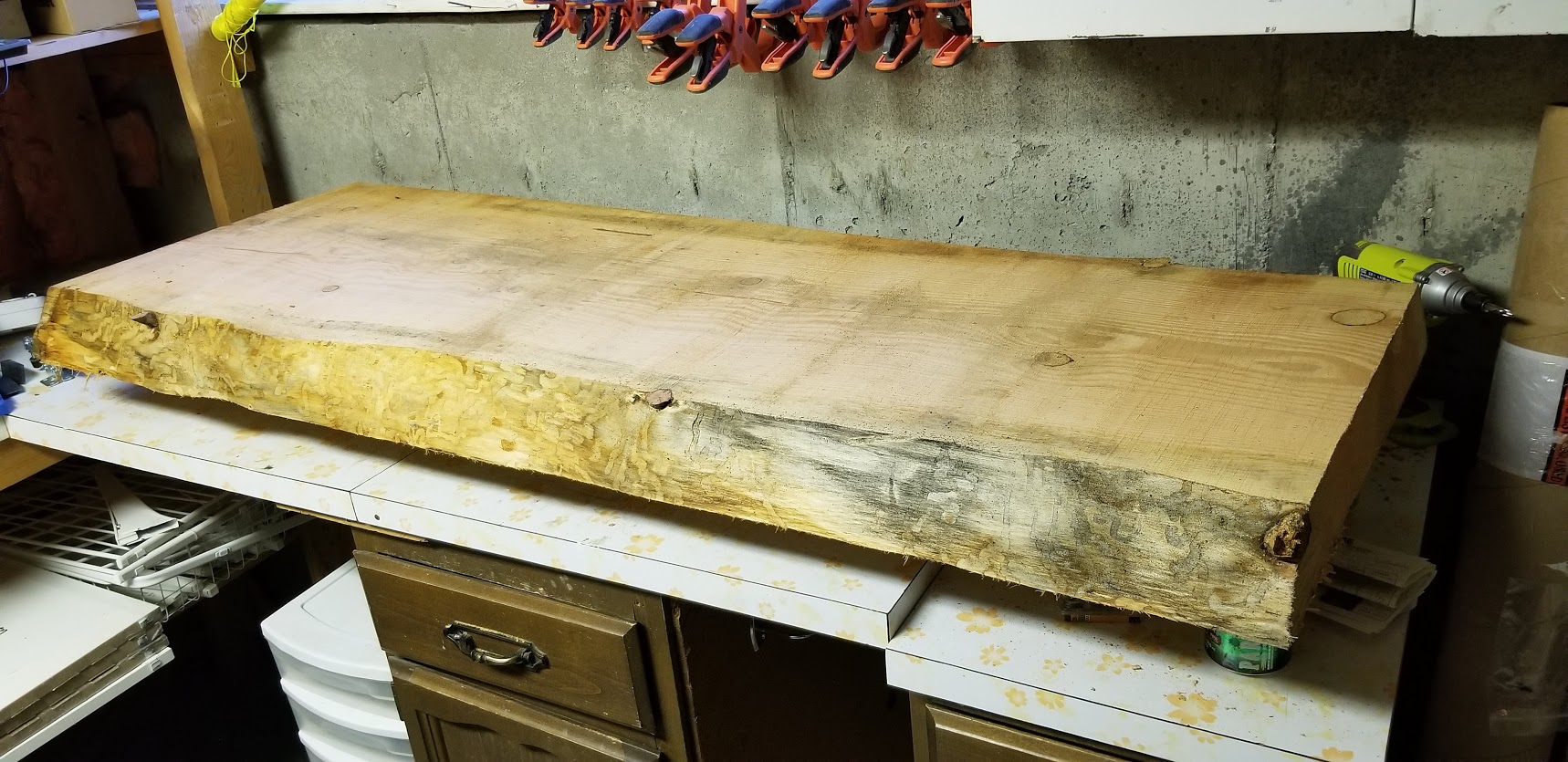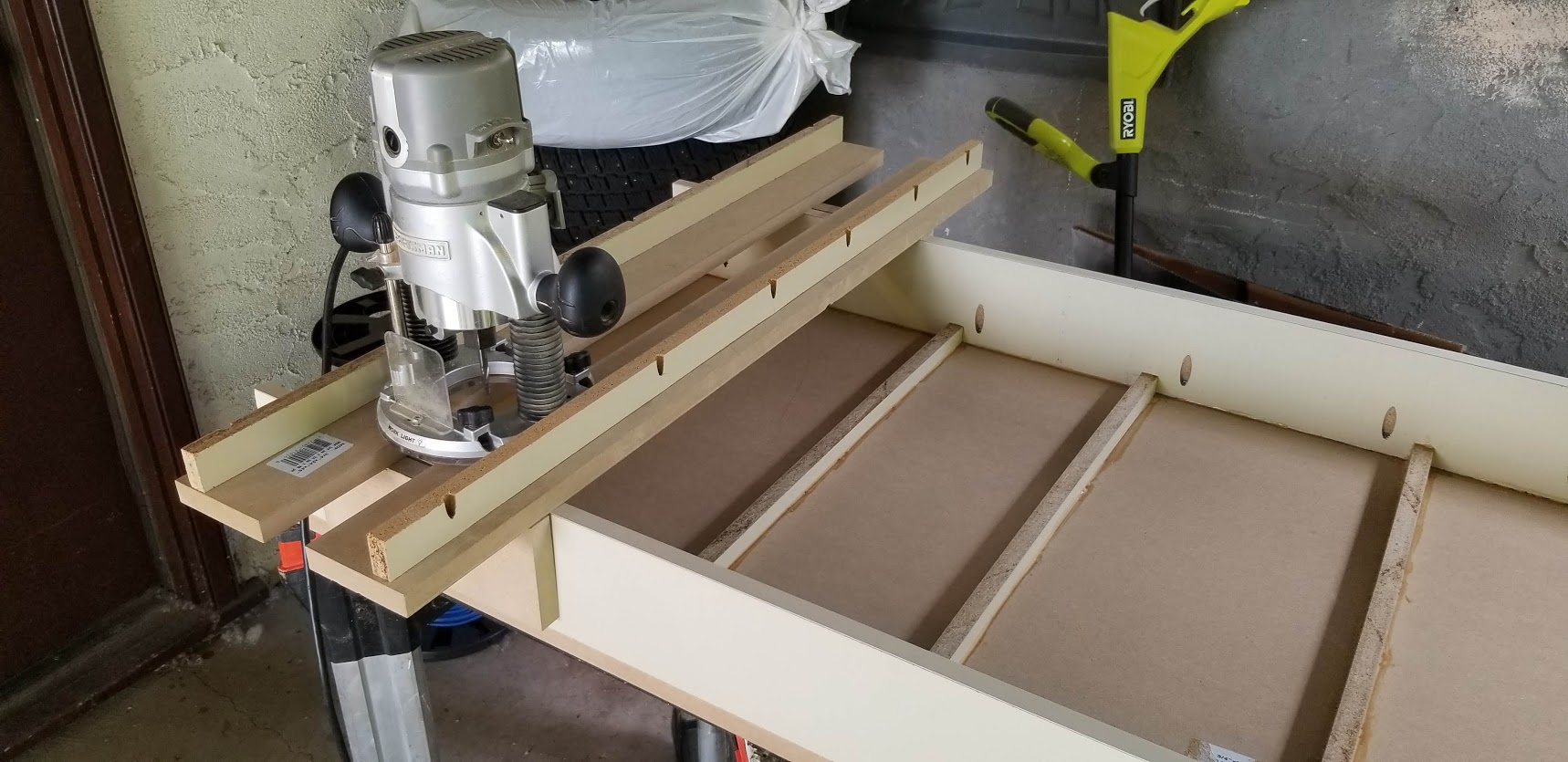Home ›
Site Links
Howdy, Stranger!
It looks like you're new here. If you want to get involved, click one of these buttons!
Quick Links
Categories
In this Discussion
Who's Online (0)
Flattening a slab
Back in January I'm sure some of you noticed that I posted a photo of a nice live edge slab of Fir. Well I'm finally getting around to doing something with it, I need the space so I can build my next speaker project 
This is a 3" thick slab of Fir, the old photo from when I bought it and removes the bark. The bark was very nice and came off in one piece even, but I think we're going to leave the bark off, as we're not going for a rustic look in our home. This will end up being a bench when complete, that could easily double as a coffee table, but it will sit under our living room window as decoration, except when we need some extra seating for guests.

It was inexpensive, but just rough cut, so I need to flatten it big time. I could get a big hand planer and apply a lot of elbow grease to get it most of the way, then clean it up with a belt sander. I decided to build a flattening jig for my router instead, and when I'm done with this I will lightly modify the bed I made and flip it over to use it as a work surface that can just sit on saw horses. I don't have a garage anymore with my new home, just a carport, so it takes a bit more to set up for shop work, but still usable, I just don't have all the storage and table space that I used to.
The mistake a I made was trying to use up some old shelf boards that were otherwise going to the landfill. However chipboard is just too soft, a few of my pocket holes tore out when I screwed into them, and the ribs I added to the base I'm sure do nothing at all, but at least they provide somewhere for the sawdust to collect. This was otherwise fairly easy to build, as none of the measurements really need to be exact. I did use MDF for the router surface and the base because it is flat boards not a old warped shelf, and is much stronger than the chipboard. I just need to add some stoppers to each end, but I'll do that once I have my router bit.

There is something satisfying about drilling pocket holes though...The good thing about using the shelf boards is that they have a laminated edge, so the jig can slide easily across it. Looking at Youtube videos, I think the best tip I found is to take a couple pieces of string and make an X across the jig, if the string touches in the middle then the jig is flat, if they don't touch then it needs some adjustment.
I don't have a fancy high power router, so I'm going with a 1.5" bit, hopefully my router can cope with that:
Has anyone here done this sort of woodwork before?
I'm not deaf, I'm just not listening.
Tagged:

Comments
InDIYana Event Website
I built a TM with a butcher block oak baffle, and got great results. Pieces of HDPE on the bottom help it glide smoothly.
https://www.youtube.com/watch?v=aa0dzZlPsGM
https://www.jfcomponents.com/
https://www.jfcomponents.com/
https://www.jfcomponents.com/